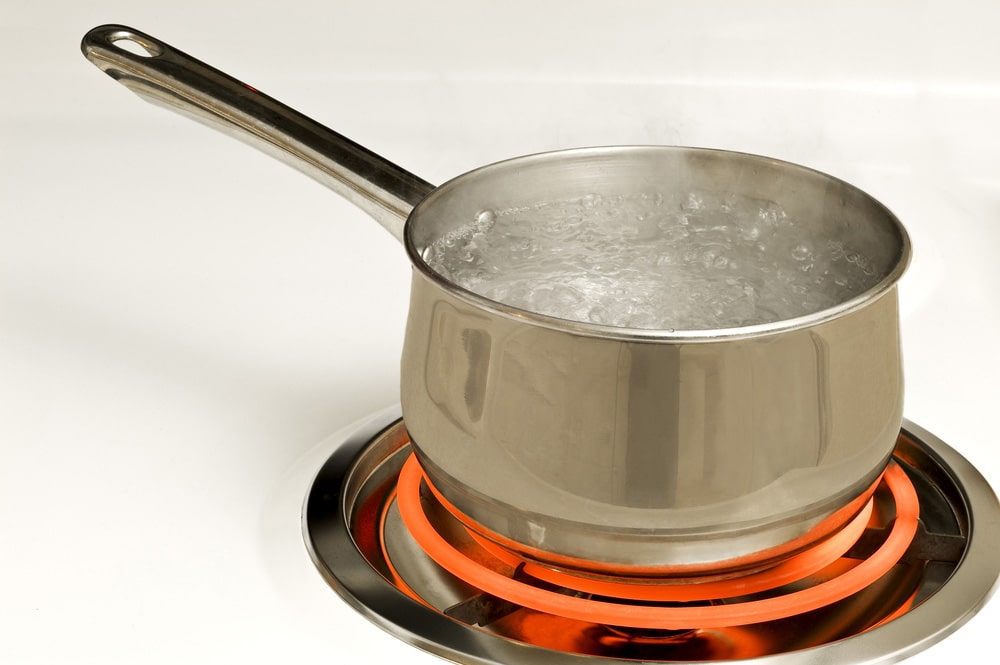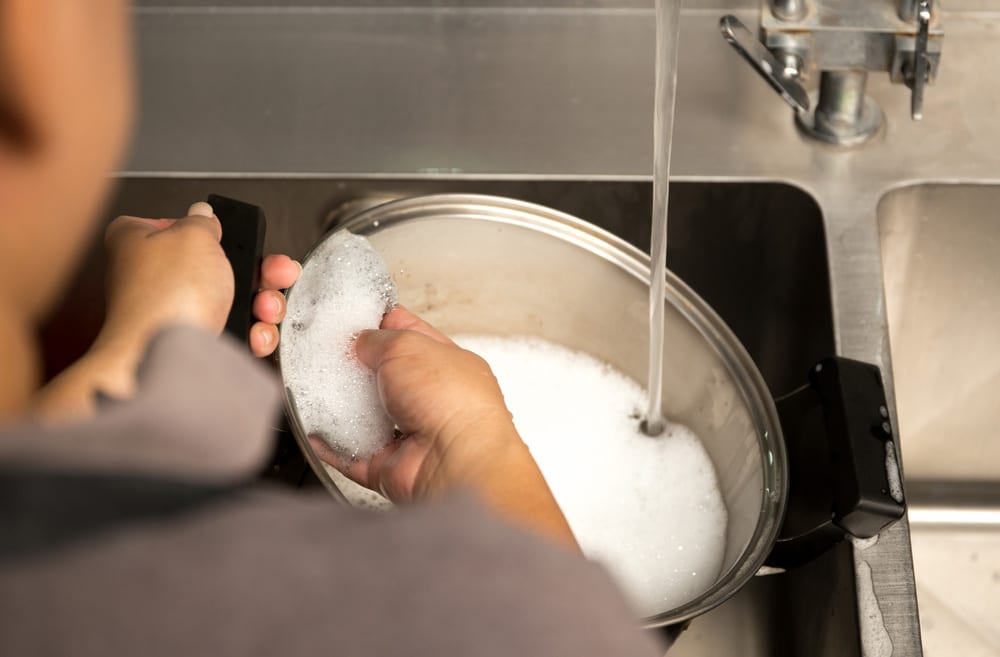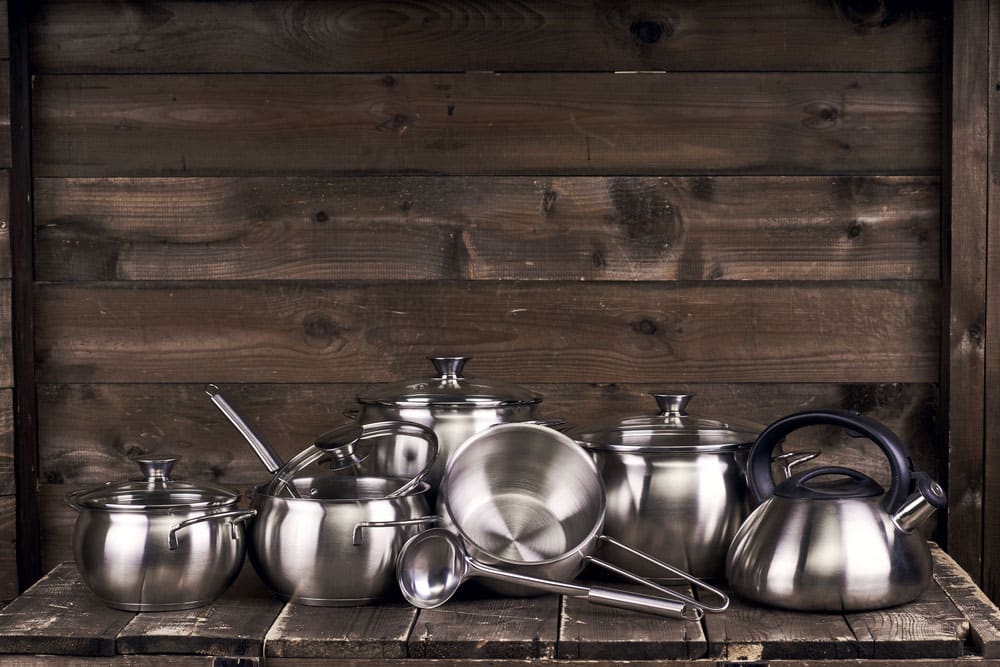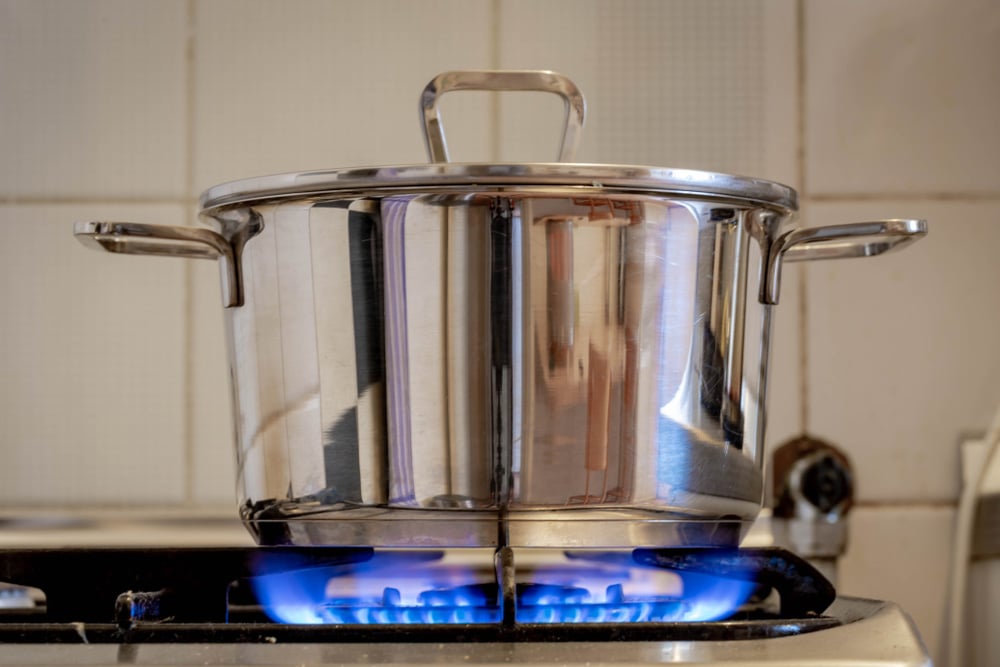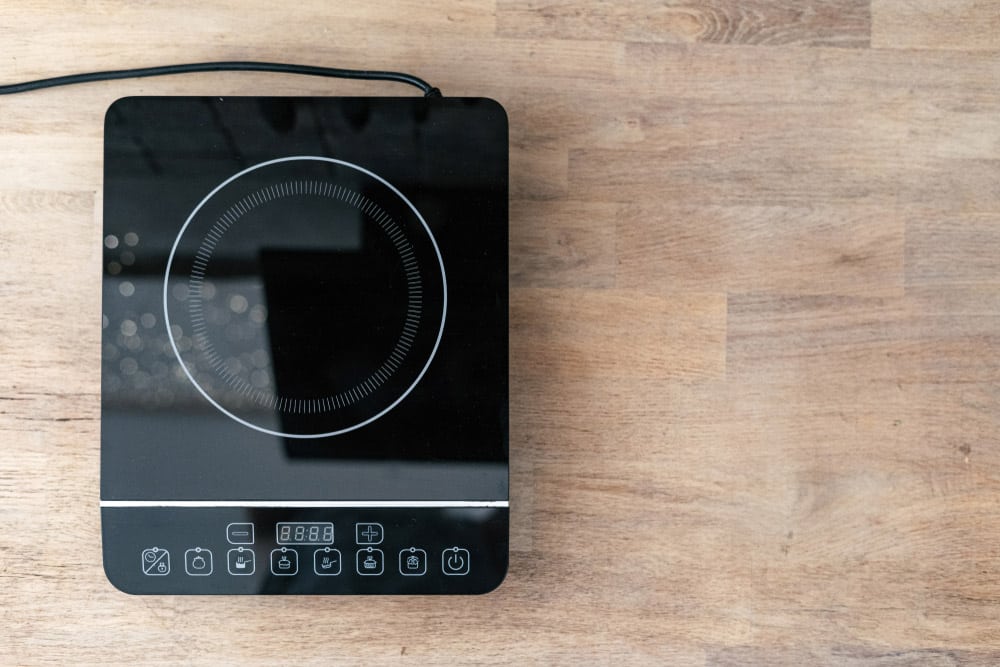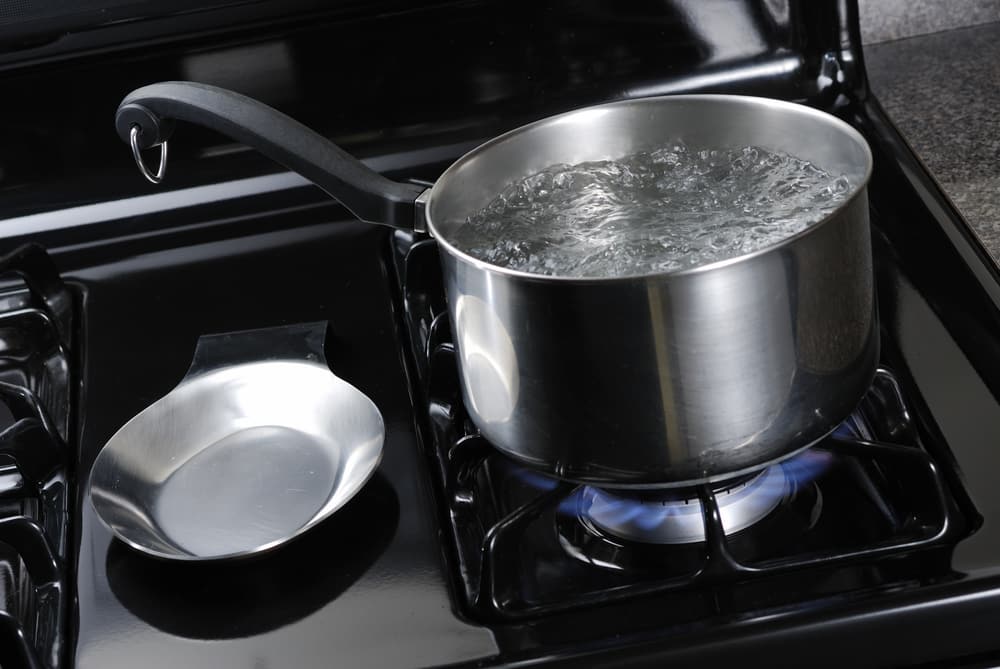
We boil water a lot throughout the day. We cook with water and we boil water for coffee or tea. In cities where flooding occurs, alerts are sent to citizens to boil water to remove bacteria before drinking or cooking with it.
The best way to boil water will depend on the application. If you’re cooking pasta, a fairly large pot of water on a burner will be required. If you wanted boiling water for a hot beverage, if you had a kettle, that would be the best way to boil water.
How to Boil Water in Stainless Steel Pot
A rust-proof metal is born
Stainless steel is a fairly new material, with Harry Brearley inventing the first stainless steel in 1913. He added chromium to iron, producing a rust-proof metal. Of course, improvements to stainless steel came later, with different formulations being tested.
Today, there are about 100 grades of stainless steel. People have been boiling water since time immemorial, but they haven’t always been boiling water in stainless steel pots. Boiling water is always a good way to purify water but is it safe to do so in a stainless steel pot?
How to boil water in a stainless steel pot on your stovetop
There are many reasons why you will want to boil a pot of water at home. A stainless steel pot can make boiling water easy peasy.
- Take your stainless steel pot out of the cupboard you keep it in.
- Choose the correct-sized stove plate for the particular stainless steel pot you are using.
- Don’t choose the biggest plate if you have a small pot. The pot’s handles will extend over the hot plate. The heat could damage the pot’s handles.
- Check the temperature knobs on your stove. You can select a heat of between 1 and 6 as an example. If you turn it up to 6, this is the highest heat that will bring the water inside the pot to a quick boil. Other older stoves give you the option to choose low, medium, or high.
- Your stainless steel pot will bring the water to a boil quicker when the lid is on.
- The hotter your stove plate, the faster your water reaches its boiling point. The less water you have in the pot, the faster it will boil.
- Fill the pot up with cold water from the tap over your kitchen sink.
- Turn the temperature knob to your desired heat. You will have to wait several minutes for the water to boil. The size of your pot with water will influence how fast the water will boil.
- When the water in the pot reaches a rolling boil, allow it to boil for another minute.
- Turn the plate off and allow the water to cool down.
Some materials conduct heat better than others. These materials allow water to boil faster. Glass is a poor conductor of heat, so boiling water in a glass pot will take that much longer.
Even though stainless steel is a durable cooking vessel, cookware manufacturers add another more conductive metal such as copper to their pots. Mid-range and high-end pots are made from metals pressed into the shape of a cooking vessel, and this is known as cladding.
It is this cladding that ensures even heating all around. Clad cookware consists of three, five, or seven layers of metal. This is what distributes heat and also protects whatever ingredients you have in the pot.
There are many other advantages to using a quality stainless steel pot for boiling water-
- Quality stainless steel heats evenly because of its cladding.
- It is highly durable and designed to last you a lifetime.
- Stainless steel is non-reactive and won’t react badly with acidic foods.
Wash your new pot with warm, soapy water
If you have brought a new stainless steel pot home, you can have peace of mind that your pot is probably the safest to use, but they do use up a lot of energy. When you buy a stainless steel pot, you will find that this cookware is made from top-quality stainless steel.
You can be sure that such quality cookware will be easy to keep clean too. If you’ve just bought a new stainless steel pot, before you boil water in it, use some warm, soapy water to wash it with. Dry the pot off with a clean, soft, dry towel.
Most microorganisms can’t survive in water above 160 °F for more than 30 minutes. But what utensils do people use to achieve this? Out of all the cookware available to us, stainless steel is the safest and also the most popular.
It’s the grade of stainless steel that counts
Stainless steel experts tell us that stainless steel can leach small amounts of chromium and nickel into food. The grade of the stainless steel has a say in how much leaching occurs.
There are some cooking organizations that claim that stainless steel cookware is far more stable than other materials used for cooking and that you are far less likely to have any leaching with quality stainless steel.
Any quality stainless steel cookware you have, such as 316 stainless steel, is always going to be a better choice than other materials available to you. You’ve probably owned a non-stick pan before and seen how the teflon-type coating eventually deteriorates.
Owners of these pans have reason to be concerned about the coating entering their food. Compared to various other materials available to you, stainless steel is a strong, durable, low-maintenance cookware option.
Most stainless steel to be used at a moderate heat
Stainless steel has a high melting point too. However, the various stainless steels have different temperature tolerances and melting points. At extremely high temperatures, many materials lose their tensile strength.
With stainless steel, even before its melting point is reached, the metal becomes more susceptible to bending when heated. Extreme temperatures can also cause scaling and particularly high temperatures can do damage to a stainless steel pot.
Most stainless-steel pots are designed to be used at a moderate heat. They can take heat up to about 600° Fahrenheit. To boil water, the heat in your pot will be roughly 212° F. Culinary experts will tell you that high, unnecessary heat is the enemy of cookware.
You wouldn’t, for instance, put your stainless steel pot over an open fire to boil water. If you’re out camping and you need boiling water, you should use some kind of stand for your pot and avoid putting it close to the flames. The temperature of a fire can get hot enough to damage stainless steel.
The best stainless steel pots distribute heat evenly
These stainless steel pots have been designed to distribute heat evenly when using them for cooking. They’re suitable for all kinds of hobs. It is one of the best metals to use on most hob types.
It heats evenly and remains at an even temperature throughout the cooking process. This is thanks to the stainless steel pot’s excellent heat retention.
- Gas stoves
Most pots and pans these days are manufactured with stainless steel. This means that they are also able to withstand the heat from a gas stove’s flame as well. You can boil water in a stainless steel pot on a gas stove with ease.
Because of the grain structure of these kinds of pots, you don’t get hot and cold spots on the bottom of the pot when using your pot on a gas hob.
How do you boil water in a stainless steel pot on an induction stove? There are different grades of stainless steel that are magnetic.
These stainless steel pots work well on an induction hob. You get stainless steel pots that can be used on induction stoves that have the induction symbol on the bottom of the pot.
- Portable gas plate
Today’s camping equipment makes outdoor life a breeze, and it boils down to having the right equipment. Stainless steel can be reliable camp cookware because it can also be used on a portable gas plate. While camping, boiling water is a safe way to purify your camp water.
- Select your stainless steel pot.
- Light your gas plate and adjust the flame to how you like.
- Place the stainless steel pot filled with water on the plate.
- Place a lid on the pot and wait for the water to boil.
- The water will boil within 3 minutes.
- Once the water is boiling, remove the pot from the plate and turn off the gas immediately.
Heating water to a boil is easy on these portable gas stoves as you can control the flame and the temperature. This is a quick and easy way to heat water quickly.
Conclusion:
It is safe and sensible to boil water in a stainless steel pot. Stainless steel is a great material to use in the kitchen, whether you’re cooking or boiling water. It is hardy, good-looking, rust-proof, scratch-resistant, dishwasher-safe and durable.
For your stainless steel pot to behave the way it should, look after it. Avoid using sharp metal utensils on it and abrasive cleaning materials.
Versatile stainless steel pots are great for boiling water and are suitable for electric stoves, gas stoves, induction tops and portable gas plates. Isn’t it time you upgraded some of your kitchenware to stainless steel? It’s the simplest and most convenient way to boil water and prepare food.
